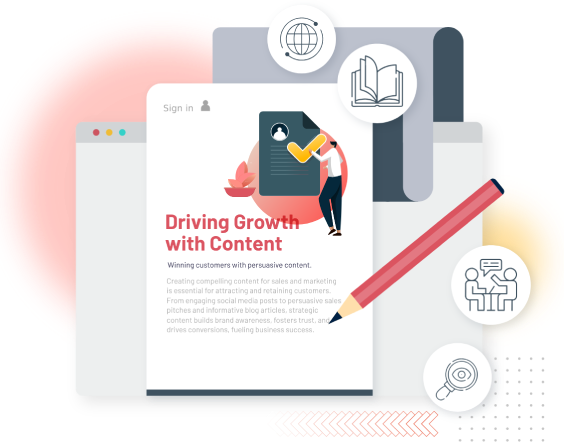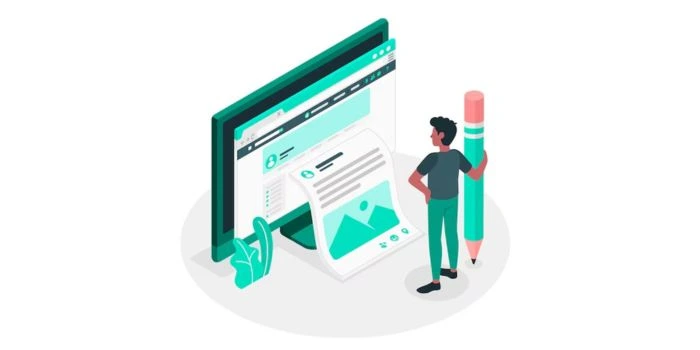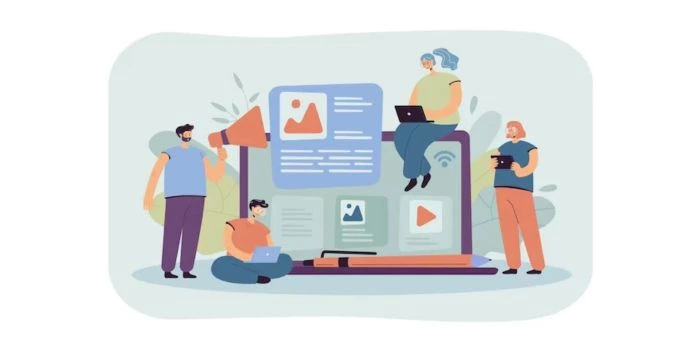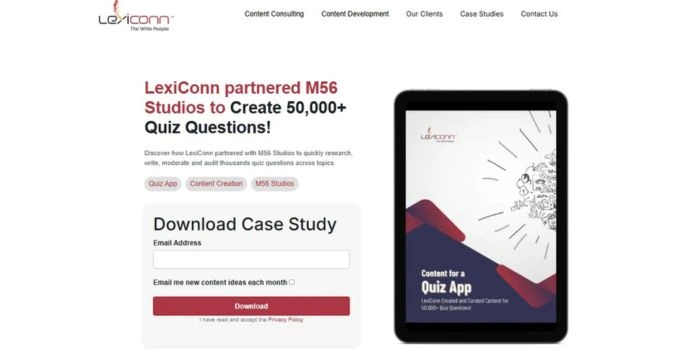

Sales writing is no longer just about crafting catchy slogans or flashy taglines. In today’s marketplace, it’s a critical driver of conversion and customer engagement. For business heads juggling multiple priorities, the challenge lies in bridging the gap between generic copy that informs and strategic writing that inspires action. The right sales copy doesn’t merely sell—it builds relationships, addresses pain points, and nurtures trust.
For business leaders, the stakes are higher. It’s not just about clicks but creating meaningful connections that drive decisions. As we dive into these 10 proven strategies, you’ll discover how tailored sales writing can become your biggest competitive advantage.
What separates a lackluster sales pitch from one that compels action? At its core, the difference lies in understanding human behavior—the psychological triggers, motivations, and emotions that influence decision-making. Conversion is not just about convincing someone to buy; it’s about connecting with them on a deeper level, addressing their needs and desires, and guiding them toward taking the next step. Strategic sales writing taps into this psychological landscape, crafting messages that resonate with the audience’s innermost concerns and aspirations.

Relevance is the cornerstone of any successful sales pitch. The more closely your message speaks to your audience’s specific needs, pain points, and goals, the more likely it is to trigger an emotional response that propels action. Relevance isn’t just about offering a product or service—it’s about positioning that offering as the solution to an immediate problem. In practice, relevance means tailoring your sales writing to reflect the language, tone, and concerns of your target market.
Understanding these underlying factors allows you to craft messaging that aligns with what matters most to them.
Clarity is another non-negotiable in sales writing. The adage “simplicity is the ultimate sophistication” rings especially true in this context. A confused prospect is a lost prospect, and complexity rarely breeds trust. If your message is not immediately understandable, it can quickly turn off potential customers, who may perceive it as too much effort to engage with.
Clear sales copy communicates not only the value of your product or service but also the process by which customers can act on it. It’s important to break down complex ideas into easily digestible chunks. Use plain language, bullet points, and strong, direct calls to action (CTAs). If your messaging requires multiple steps to grasp, you risk losing the prospect’s attention before they reach the final step of conversion.
Urgency is what drives a potential customer to move from consideration to action. Humans are wired to act when they perceive a limited opportunity. Creating a sense of urgency in your sales writing pushes the audience to make decisions more quickly, bypassing the hesitation that often accompanies major purchasing choices.
It taps into the fear of missing out (FOMO) or the desire to seize a limited opportunity before it's gone. This urgency doesn’t have to be overblown or misleading; it’s about genuinely conveying the benefits of taking immediate action. Let’s break down the key elements:
This is one of the most common forms of urgency used in sales. When a customer believes a special discount or offer is only available for a short time, they feel compelled to act quickly. The fear of missing out on savings pushes them to make a purchase before the deal expires.
Limited availability can trigger urgency as well. If a product is in high demand, prospects worry that if they don’t act now, they might not be able to get it at all. This is particularly effective for scarce or exclusive items, where customers fear they will miss out on securing it before it sells out.
Effective customer engagement starts with a deep understanding of your audience—what they care about, what motivates them, and what challenges they face. Leveraging actionable insights from customer behavior is the key to relating with your target audience and driving conversions.
It’s essential to move beyond intuition and embrace the power of data to truly connect with your audience. Customer Relationship Management (CRM) systems and advanced analytics tools can provide invaluable insights into customer behavior patterns, helping you understand exactly what drives your prospects to take action.
One of the most effective strategies for driving engagement is audience segmentation. By categorizing your audience into distinct personas based on their roles, goals, and pain points, you can create messaging that directly addresses each group’s unique needs. For example, a decision-maker in a large enterprise will have different concerns and priorities compared to a small business owner or a frontline employee.
Segmentation enables you to craft personalized messages that relate more deeply with each group, creating a sense of relevance and urgency. Whether you’re targeting executives, managers, or end-users, the more specific your message, the more likely it is to drive engagement.
Your headline is the first impression—and it determines whether your copy gets read. A compelling headline captures attention and sparks curiosity. For customers, clarity trumps cleverness. Instead of “Unlock the Future,” try something specific like “Drive 30% More Conversions with Targeted Campaigns.”
|
Pro Tip: Use power words like “boost,” “elevate,” or “accelerate” to create impact. |
It’s easy for your customers to get lost in a sea of technical jargon, features, and benefits. What truly relates with your audience, however, is the human element. Storytelling is the bridge that connects your product or service to real-world problems, making your solution a transformative experience. Sales are no longer just about the “what” of your offering; they’re about the “how” and the “why” your solution creates value, and why it matters to your customers.

Effective sales storytelling follows a simple, but compelling structure that engages your audience and makes your product or service memorable. Here’s a breakdown of the framework:
A prime example of storytelling that blends sales and real-world impact is LexiConn’s partnership with M56 Studios to create over 50,000 quiz questions. At its core, sales storytelling isn’t just about pushing a product or service—it’s about illustrating the journey your customer will experience and the transformation they will undergo. By framing your messaging within a narrative structure that addresses challenges, provides solutions, and showcases results, you build trust and credibility with your audience.
Just like our work with M56 Studios, effective storytelling in sales can turn complex challenges into opportunities for growth and success. It’s this human connection that drives conversions, nurtures customer engagement, and fosters long-lasting business relationships.
As a business leader, leveraging the art of storytelling in your sales strategy isn’t just a nice-to-have—it’s an essential component of a winning approach. Your audience doesn’t just want to know how your product works—they want to understand how it can change their world.

M56 Studios approached LexiConn with a significant challenge: creating over 50,000 quiz questions across various topics, ensuring high engagement and accuracy. The project needed precise content moderation, cultural sensitivity checks, and rapid delivery to meet the tight launch deadline for their quiz app.
To meet this challenge, LexiConn formed a dedicated team for research, writing, and moderation. Our approach included:
This strategy ensured we delivered high-quality, tailored content on time.
We exceeded expectations by delivering over 50,000 quiz questions ahead of schedule. Our attention to detail and timely delivery played a key role in M56 Studios’ successful app launch, increasing user engagement and market visibility. This project showcases LexiConn’s capability to handle large-scale, high-quality content creation under tight deadlines.
For business leaders looking to drive higher conversions and sustained customer engagement, it’s crucial to craft messaging that speaks directly to the unique needs of each customer persona. Here's how you can effectively segment your messaging to ensure it drives results:
Begin by segmenting your audience into distinct personas based on factors such as role, industry, and specific pain points. Recognizing the challenges and goals of each persona allows you to deliver highly relevant content that resonates with their needs.
Example:
Your audience’s intent and their stage in the decision-making process dictate how you should frame your sales writing. Are they just researching, or are they close to making a purchase decision? The way you position your solution should vary based on these insights.
Example:
Generic messaging doesn't resonate with busy business leaders. Instead, your sales writing must directly address the pain points that each persona faces and show how your solution provides a clear, effective answer.
Example:
Tailored messaging is not just about short-term conversion; it’s about establishing a foundation for long-term customer engagement. When your sales copy is relevant, empathetic, and personalized to the customer persona, it fosters trust and positions your brand as a solution provider rather than just a vendor.
Business leaders don’t have time for jargon-filled explanations. Simplify your message without losing depth. Highlight key benefits in bullet points and focus on outcomes rather than technical details.
|
ProTip: Use metaphors or analogies to make abstract ideas tangible. For instance, describe your service as “the GPS for marketing success.” |
A sales copy that emphasizes your unique selling points (USPs) helps prospects understand what sets your product or service apart in the market. It’s not enough to just mention features; you need to showcase why these features matter and how they solve specific problems for your audience. By emphasizing the unique elements of your offering, you build both differentiation and trust, which drives customer engagement and enhances conversion.
Rather than simply selling a product, positioning your brand as a trusted advisor enhances your relationship with the prospect. This approach elevates your sales copy from transactional to relational, where your brand is viewed as a key resource for ongoing success. By emphasizing your role as an expert and a partner, you build deeper connections that resonate long-term, fostering customer loyalty and driving higher conversion rates.
Your call-to-action (CTA) should be crystal clear and action-oriented. Avoid vague phrases like “Learn More.” Instead, use specific prompts such as “Schedule Your Free Demo Today.”
Best Practices:
Even the most experienced marketers can’t predict what will relate best. Testing variations of headlines, CTAs, and body copy reveals what drives higher conversion rates. Use analytics to refine your messaging iteratively.
The structure of your copy affects readability. Use subheadings, bullet points, and whitespace to guide readers through your content seamlessly.
Example: An email can use bolded key benefits, while landing pages might prioritize CTAs supported by concise testimonials.
Keywords like “sales writing,” “conversion,” and “customer engagement” are more than SEO tools. They reinforce your authority and connect with audience expectations. Use them naturally in headlines, subheadings, and CTAs.
Exceptional sales writing requires more than strategies—it demands execution. At LexiConn, we specialize in assembling full-time content teams tailored to your needs. Whether it’s crafting content for engagement or copy for closing deals, we bring proven expertise.
Let’s work together to elevate your brand with content that not only drives conversions but also builds lasting customer engagement. We deliver unmatched efficiency and innovation by combining human creativity with the power of advanced AI tools,
Sales writing is both an art and a science. By adopting these 10 strategies, business leaders can craft copy that not only engages but converts. Whether it’s the power of storytelling, the clarity of tailored messaging, or the impact of trust signals, every element plays a crucial role in driving success.
Ready to elevate your sales writing game? Schedule a free 30-minute consultation with LexiConn today. Let’s assemble a content team that’s as strategic as your business goals.



I have read and accept the Privacy Policy
Read More